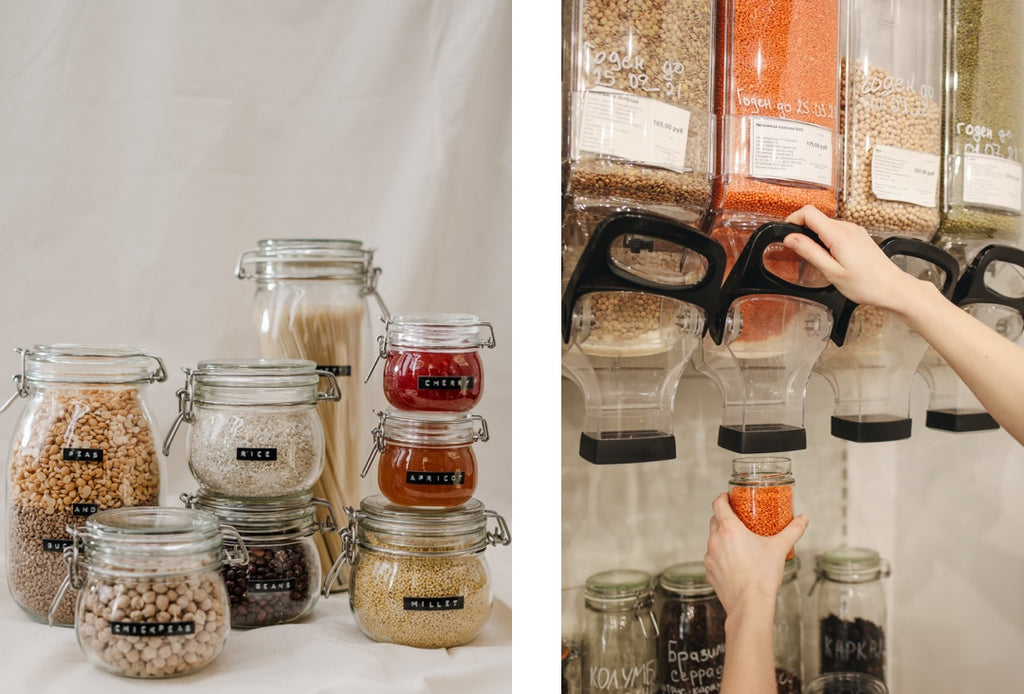Table of Contents
12 Practical Sustainability Tips: Simple Changes for a Greener Future
This page may contain affiliate links. We may earn a commission on purchases, at no additional cost to you. Learn more →
We all know that we need to take better care of the environment - at this very moment. Understanding this is not just important, it can actually be implemented in daily life. The good news is that all of us can live more sustainably and improve our eco-footprint on this planet. And don’t worry: you don’t have to flip your life upside down and change all daily habits overnight. It’s the small and consistent changes that make us live more sustainably and ethically, helping us fight climate changes effectively.

What is a Sustainability Tip?
A sustainability tip is a practical piece of advice aimed at helping individuals reduce their environmental impact. These tips are designed to be easily integrated into daily life, encouraging mindful consumption, energy conservation, and waste reduction. Here are some expanded insights and strategies:
Many small and meaningful changes turn into something big in the long run. In this article you will find 12 easy steps on how to be more sustainable, featuring practical sustainable living tips.
Our 12 sustainable living tips for daily life
1. Choose Reusable Shopping Bags

Photo by cottenbro @Pexels
One of the classics: After work you want to stop by the supermarket and get some ingredients for dinner. Your hunger is big after a long day, your bag is already overflowing and it’s tempting to grab a one-way bag at the checkout. In the fruit and vegetable isles, the plastic bags are also an easy temptation. Even the paper bags are not as environmentally friendly as they seem. Thankfully, there are canvas bags* with gorgeous prints or trendy string bags * in all kinds of colors that fit into any purse. Using a reusable shopping bag is a simple yet effective way to reduce environmental harm. That way you are prepared for a spontaneous shopping run!
2. Adopt a Zero-Waste Lifestyle

Photo by Polina Tankilevitch @Pexels
You might have heard of the 5 R's of sustainability: Refuse, Reduce, Reuse, Rethink, and Recycle. These rules guide us towards more sustainable living. With zero-waste we go one step further and look at the whole lifecycle of every item we own and use, to minimize plastic waste. It’s about choosing durable over disposable, repairing instead of discarding, and consuming less. When you do buy, buy items that are built to last.
A zero-waste lifestyle also means engaging with your community to share resources and understanding your local waste management system. Recycling alone isn’t enough to solve waste problems in the short or long term.
For those looking to start their zero-waste journey, there are plenty of resources available. Online shops like Zero Waste MVMT* and Package Free Shop have a huge range of sustainable products that are beautifully packaged and shipped in eco-friendly ways. They have everything from reusable kitchen items to personal care products, to help you live waste free.
3. Plan Your Meals to Reduce Food Waste
The kitchen is where it all starts with living sustainably. Did you know that a lot of food waste occurs because we don’t plan our meals? Food gets thrown away because it’s past its expiration date, even though it’s still good to eat. Remember, expiration dates are a guide not a rule. Try setting aside one day a week to plan your meals and make a shopping list. That way you only buy what you need, reduce waste and your grocery bill. And you’ll feel good knowing you’re making a positive impact on the planet by reducing food waste.
4. Say Goodbye to Disposables

Photo by Karolina Grabowska @Pexels
Straws, cotton pads, cotton buds and much more. There are so many little things that we use in our daily life. The sad reality is that 99.99% of them land in the bin after a single use and less than 10% of everyday plastic actually gets recycled (in the UK). That’s unwise for our wallets and extremely harmful to the environment. Say no to all disposables and start by doing an inventory of your home. Which products do you use daily and which of those can you replace with an environmentally-friendly alternative?
Consider investing in a reusable water bottle to reduce single-use plastics while traveling and adopting a sustainable lifestyle. And it doesn’t mean that your entire home will all of a sudden look like a hippie residence. For example, washable make-up removal pads* or drinking straws* made of glass that do good and look great.
5. Opt for Eco-Friendly Products at Home

Photo by Karolina Grabowska @Pexels
One of the easiest tricks to save energy and achieve more sustainability at home: choose household brands that don’t contain any toxic and harmful chemicals. Start by choosing household brands that avoid toxic chemicals. For instance, look for eco-friendly detergents made from natural ingredients, which are biodegradable and safe for waterways.
Brands like Molly´s Suds* or Ecos* offer a variety of cleaning products that are both effective and environmentally friendly to wash your clothes more sustainably. Additionally, consider making your own cleaning solutions using simple ingredients like vinegar and baking soda.
This not only reduces waste but also gives you control over the ingredients used in your home. Embracing non-toxic living is a simple yet powerful way to protect your health and the planet.
Incorporating non-toxic living into your sustainable lifestyle not only enhances your well-being but also supports a healthier environment.
6. Choose Sustainable Clothing to Reduce Your Carbon Footprint
The fashion industry is a big polluter but you can make a difference by choosing sustainable fashion. In the US there are heaps of brands that are ethical and eco-friendly. Brands like Pact* or Patagonia are known for their commitment to sustainable fashion, using organic materials and ensuring fair labor practices. And second hand shopping is a great way to reduce your impact. Platforms like ThredUp and Poshmark have heaps of high quality pre-loved clothes.
When you buy second-hand you’re lengthening the life of a garment and reducing the demand for new production which often involves resource heavy processes. When buying new look for brands with eco certifications and those that are transparent in their supply chain. By supporting slow fashion you’re not only reducing pollution but also advocating for better labour practices globally.
7. Teach Sustainability to Your Kids
Photo by Tatiana Syrikova @Pexels
Our children learn a lot in school, but sustainability often isn't part of the curriculum. As parents, it's our responsibility to fill this gap. Teaching kids about sustainability can be fun and engaging. Try gardening with them, even if it's just a few pots on the balcony. This hands-on activity helps them understand the connection between healthy soil, water, air, and the impact of fossil fuels.
Explain recycling and energy conservation in simple terms and involve them in household activities that promote sustainability. It’s often easier for kids to understand things when they can see them in front of them. By instilling an early love for the environment you’re empowering the next generation to make informed and responsible decisions.

8. Calculate your carbon footprint
Calculating your carbon footprint is key to living sustainably. A carbon footprint calculator can help you measure the greenhouse gas emissions generated by your daily activities, such as transport, energy use, food. By knowing where your carbon footprint is highest you can make informed decisions to reduce your impact.
Try using public transport, energy efficient appliances or more sustainable food options. Knowing your carbon footprint is the first step to real change, so you can take targeted action for a better planet.
9. Reduce energy consumption
Using less energy is one of the simplest and most effective ways to be sustainable. Start by turning off lights, electronics and appliances when not in use. Switching to energy efficient light bulbs and appliances will also make a big difference. And adjust your thermostat and make the most of natural light during the day to use less energy.
These small changes will reduce your carbon footprint and save you money on your energy bill.
10. Go for organic and local
Going organic and local is a great way to support sustainable farming and reduce your carbon footprint. Organic farming doesn’t use synthetic pesticides and fertilizers which are bad for the environment and human health. Local produce cuts down on transportation emissions and supports local farmers and reduces your overall carbon footprint. By doing this you’re helping a healthier planet and a more sustainable food system.
Going organic and local is a great way to support sustainable farming and reduce your carbon footprint. Organic farming doesn’t use synthetic pesticides and fertilizers which are bad for the environment and human health. By going organic you’re supporting farming practices that put soil health and biodiversity first.
Local produce cuts down on transportation emissions, supports local farmers and reduces your overall carbon footprint. Go to your local farmers market and get fresh, seasonal produce that hasn’t travelled far to get to your plate. Not only does this support your community but also you’ll be eating food at its freshest and most nutritious.

Image by Olga Drach on Unsplash
Additional Tips for Choosing Produce:
-
Join a CSA (Community Supported Agriculture): Support local farms by subscribing to a CSA box, which provides you with fresh, seasonal produce directly from the farm.
-
Grow Your Own: Even a small garden or a few pots on your balcony can yield fresh herbs and vegetables, reducing your reliance on store-bought produce.
11. Repair, Repurpose, and Support Artisan Labels
11. Mend, Repurpose, Support Artisan Labels
Before you chuck that old shirt or jeans, think repair or repurpose. Simple repairs like sewing on a button or patching a hole will extend the life of your garments. If you’re feeling crafty, turn old t-shirts into reusable shopping bags or worn out jeans into shorts. These practices reduce waste sent to landfills and conserve resources. By mending and repurposing you’re embracing a sustainable fashion mindset that values quality and creativity over fast fashion. Plus you’ll have one of a kind pieces that are you.
In addition to DIY projects there’s a growing movement of artisans creating fashion labels that focus on upcycling. These small scale designers use traditional techniques to give new life to old fabrics and create one of a kind pieces that reflect their skill and creativity. By supporting these artisan labels you get unique fashion items and help preserve cultural heritage and promote sustainable practices.
More Sustainable Fashion Tips:
-
Visit Local Artisan Markets: Go to local artisan markets or craft fairs to find one of a kind handmade clothing and accessories.
-
Follow Artisan Communities: Follow artisan brands on social media to stay up to date on new collections and initiatives.
-
Learn More: Educate yourself on the cultural significance and traditional techniques used by artisans to appreciate the craftsmanship behind each piece.
12. Offset your travel carbon
Travel can add to your carbon footprint but there are ways to reduce this. Consider investing in carbon offset projects like reforestation or renewable energy to balance out the emissions from your travel. Many airlines and travel companies offer carbon offset options when you book your flights so it’s easy to add this to your travel plans.
By choosing to offset your carbon emissions, you´re supporting sustainable development and helping to fight climate change. This way you can travel and be mindful of your impact, making your adventures more eco friendly.
Additional Tips for Eco-Friendly Travel:
-
Choose Sustainable Accommodations: Look for eco hotels and lodgings that prioritize sustainability and have green certifications.
-
Pack Light: Less luggage means less fuel burned on flights.
-
Use Public Transportation: Buses, trains or bikes when you get to your destination.

Bühlwirt Hotel © Mike Rabenstein
Final Thoughts: Keep Asking Questions and Stay Informed
The journey to sustainability is ongoing and the best tool we have is curiosity. By asking questions and seeking knowledge we can make informed decisions that benefit the planet and ourselves. Every little bit counts and collective action can make a big difference.
Questions to Ask Before You Buy:
-
Sustainable Materials: Opt for natural materials and check if they were sustainably sourced and ethically made? Look for Fair Trade or USDA Organic to ensure your purchases align with your values.
-
Eco-Friendly Manufacturing: Is the whole manufacturing process environmentally friendly and ethical? Research brands that are reducing their carbon footprint and minimising waste in production.
-
End of Life Impact: What happens when I no longer need this product? Can it be recycled, composted or repurposed or will it just end up in a landfill? Choose products with clear end of life solutions like take-back programs or biodegradable packaging.
Additional Tips for Continuous Learning:
-
Stay Updated: Follow sustainability blogs, podcasts and social media to stay up to date with the latest eco-friendly living trends and innovations.
-
Join Communities: Join local or online sustainability groups where you can share your experiences, learn from others and collaborate on projects that make a difference.
-
Educate Others: Share your knowledge with friends and family. Encourage them to ask questions and make sustainable choices and amplify the impact of your actions.
By doing these habits daily you not only increase your understanding of sustainability but also inspire those around you to take action. Remember it’s the little things and conscious choices that together make a big difference in the world. Together we can create a sustainable world for future generations.
FAQ To Sustainability Tips
What are 10 ways to be more sustainable?
-
Reduce energy consumption by using energy-efficient appliances and light bulbs.
-
Minimize water usage through shorter showers and fixing leaks.
-
Adopt a plant-based diet or reduce meat consumption.
-
Use public transportation, cycle, or walk instead of driving.
-
Practice recycling and composting to reduce waste.
-
Support local and sustainable businesses.
-
Use reusable bags, bottles, and containers.
-
Reduce, reuse, and recycle materials whenever possible.
-
Conserve resources by buying only what you need.
-
Educate yourself and others about sustainability practices.
What are the 5 C's of sustainability?
The 5 C's of sustainability often refer to to Conservation, Community, Commitment, Collaboration, and Consistency. These principles guide sustainable actions by emphasizing resource preservation, community involvement, ongoing dedication, teamwork, and maintaining sustainable practices over time.
What are the 7 keys to sustainability?
While the specific "7 keys to sustainability" are not universally defined, they often include principles such as: Energy efficiency, Resource conservation, Waste reduction, Sustainable sourcing, Community engagement, Environmental education, Long-term planning
What is the tipping point of sustainability?
A tipping point in sustainability refers to a critical threshold where small changes can lead to significant, self-sustaining transformations in environmental or social systems. Achieving positive tipping points can accelerate progress toward a sustainable future
What are the 7 Rs of sustainable living?
The 7 Rs expand on the traditional 3 Rs (Reduce, Reuse, Recycle) and include: Refuse: Avoid unnecessary products and packaging; Reduce: Cut down on consumption and waste; Reuse: Use items multiple times; Repair: Fix items instead of discarding them; Recycle: Process materials for reuse; Rethink: Consider the sustainability of your actions; Rot: Compost organic waste.
What is a good sustainability tip?
A simple yet effective sustainability tip is to carry a reusable water bottle. This reduces plastic waste and encourages hydration without environmental harm. Also a simple yet effective tip is to reduce single-use plastics by carrying a shopping bag. This small change can significantly reduce your environmental impact.
What are 3 examples of living sustainably or being sustainable?
Eco-villages: Communities designed to be self-sufficient and environmentally friendly; Urban gardening: Growing food in urban areas to reduce food miles and promote local produce; Permaculture: This approach involves designing agricultural systems that mimic natural ecosystems, promoting stability, diversity, and resilience. Permaculture practices include the use of organic inputs, intensive cultivation, and avoiding synthetic fertilizers and pesticides. These methods improve soil health and sustainability, as seen in places like the Bec-Hellouin Farm in France, where permaculture has enhanced soil organic matter and nutrient availability.
*The links are so-called 'affiliate links.' This means if you click on one of these links and make a purchase, we may receive a small commission at no extra cost to you, which in turn helps us to further develop the blog and create even more useful and valuable content for you!
Orbasics Gmbh is also a participant in the Amazon Services LLC Associates Program, an affiliate advertising program designed to provide a means for sites to earn advertising fees by advertising and linking to amazon.com.













